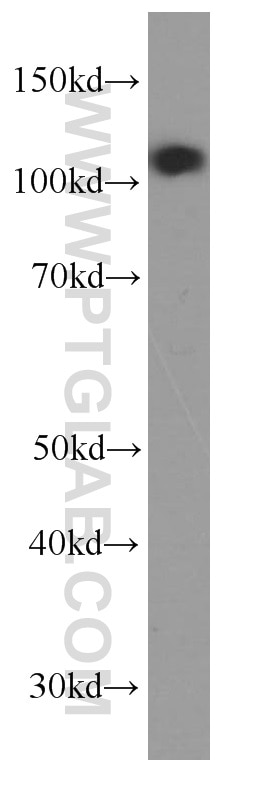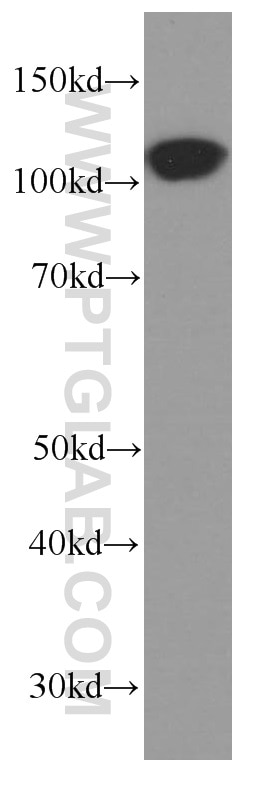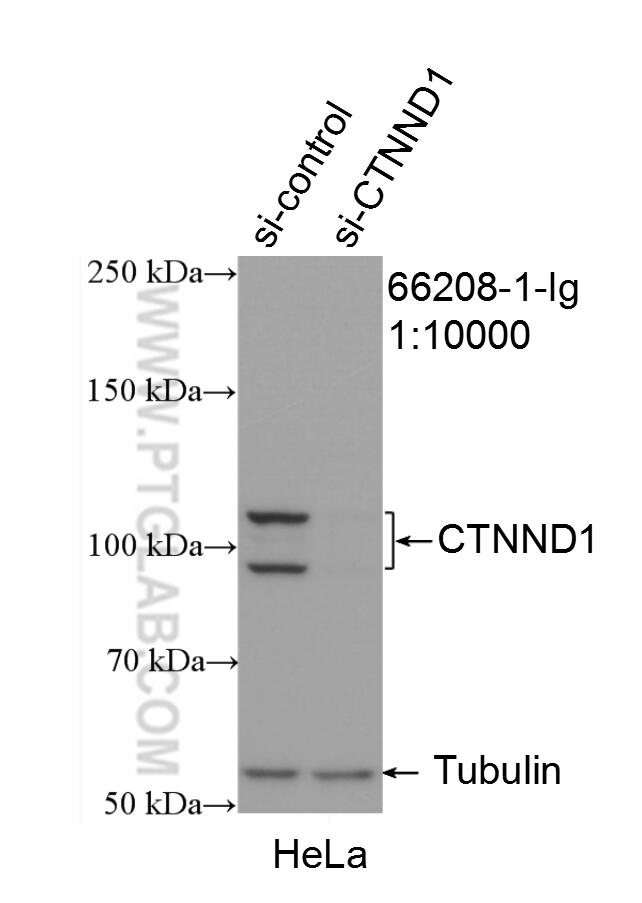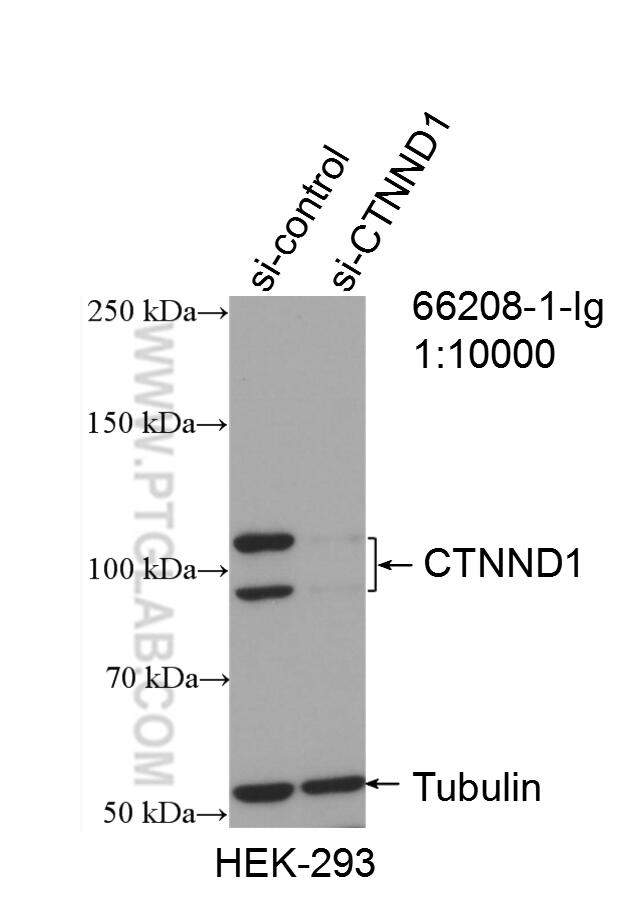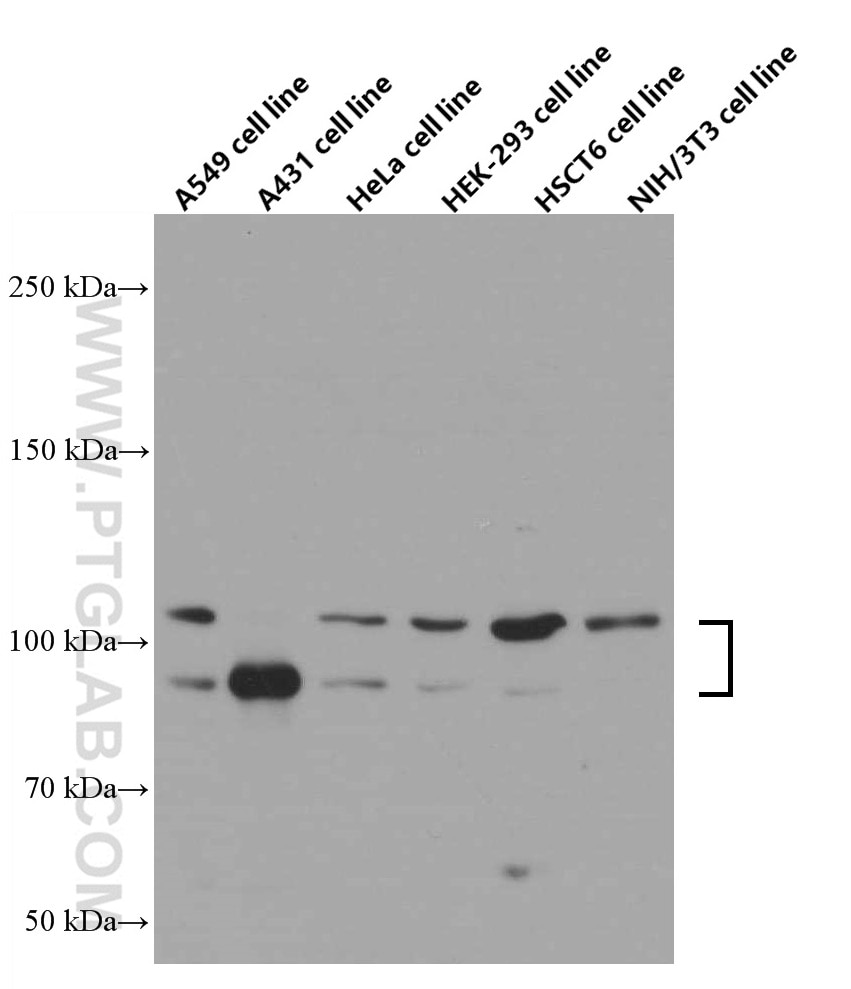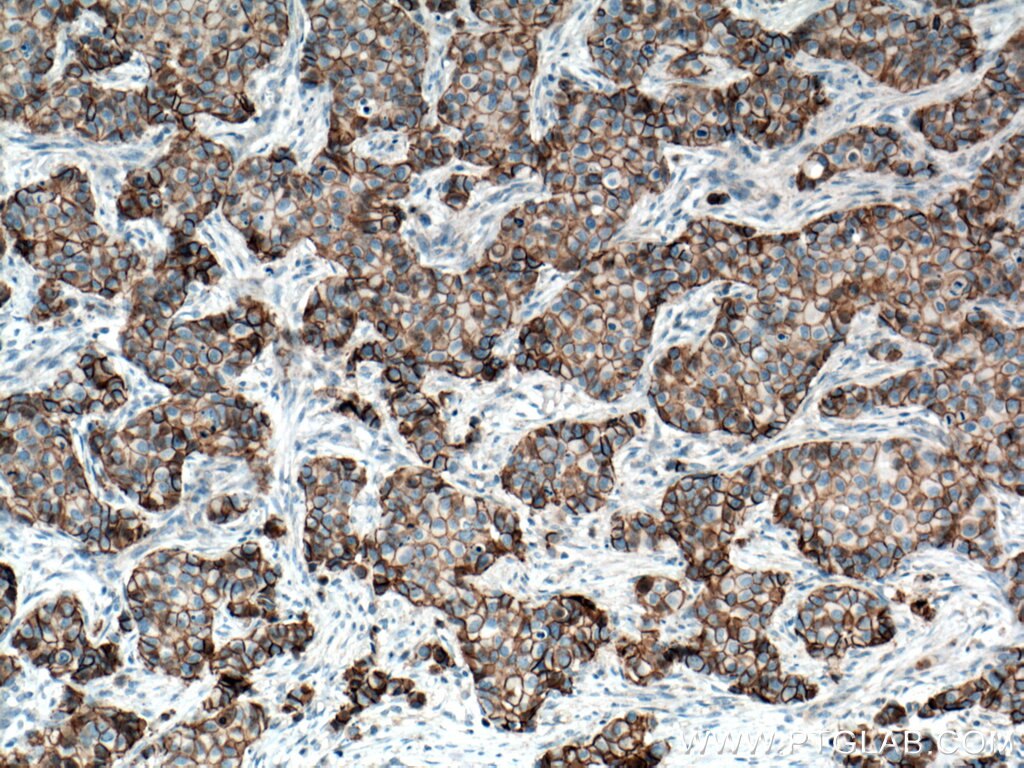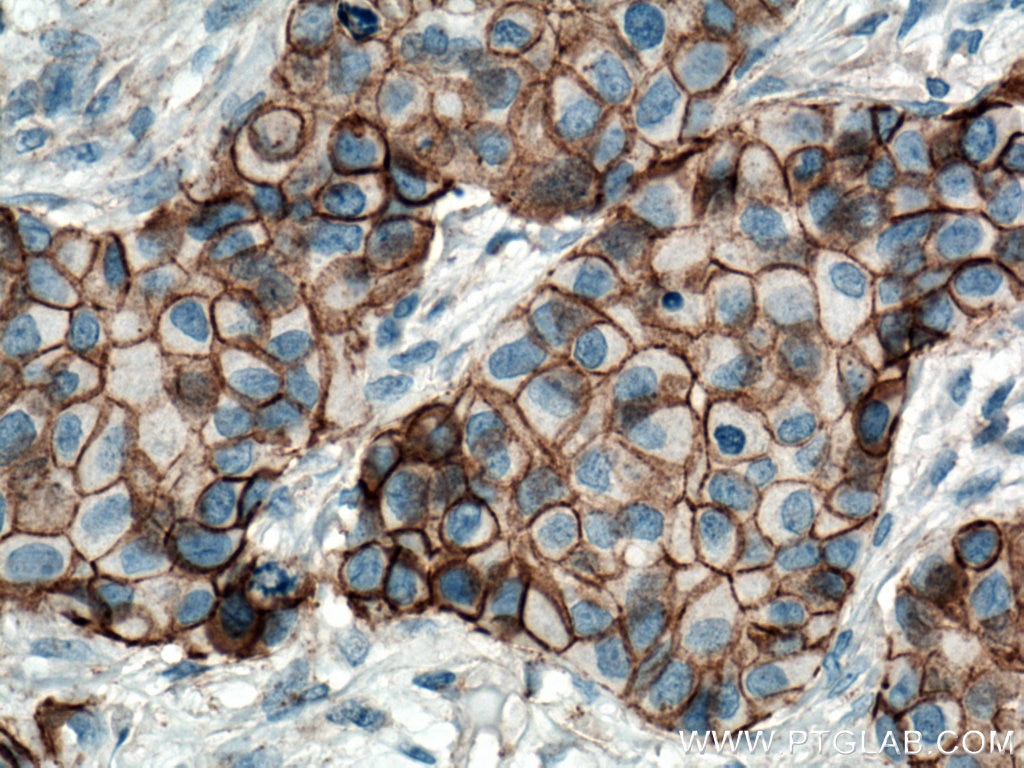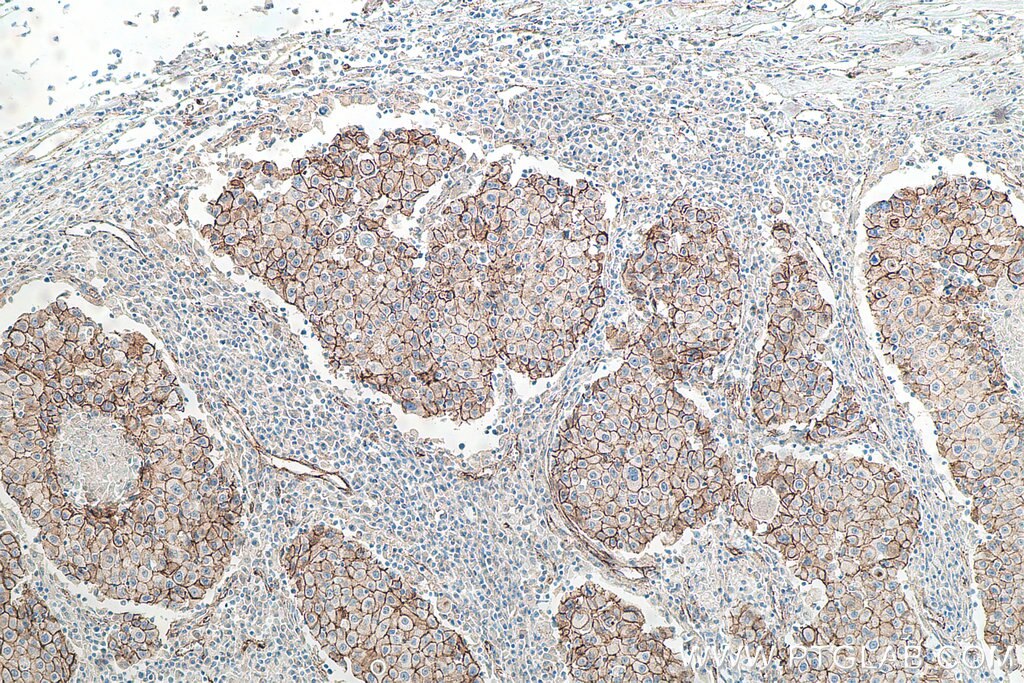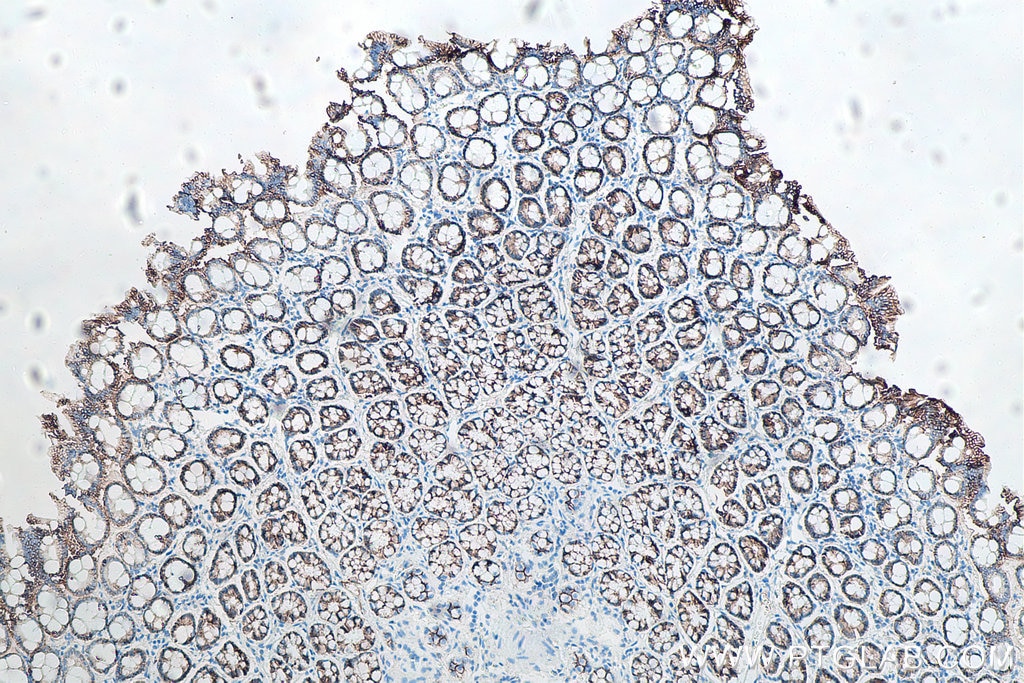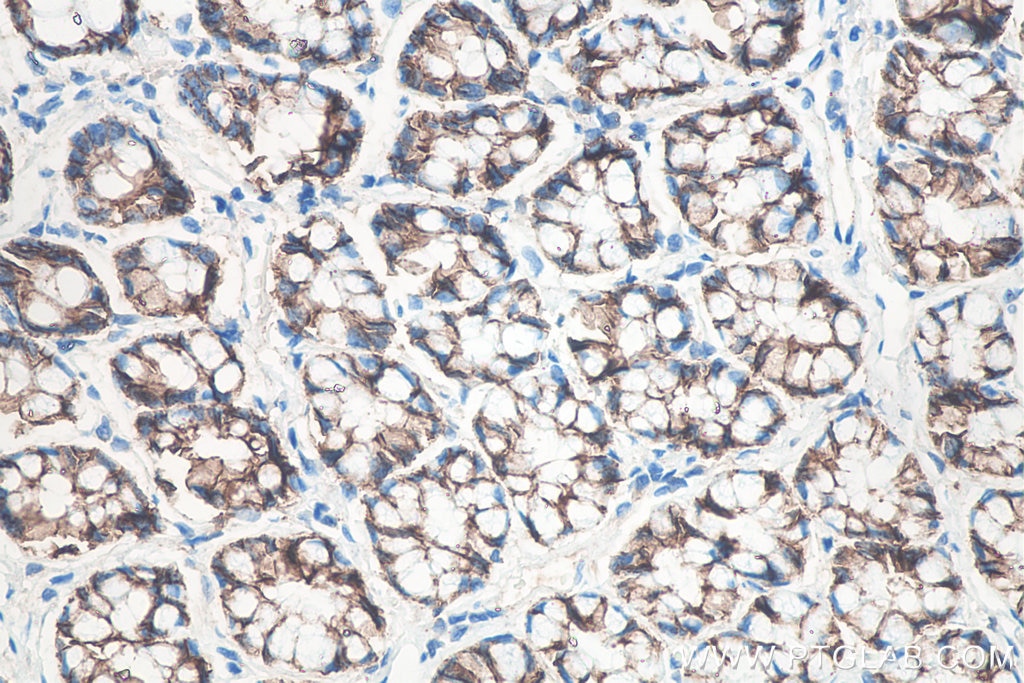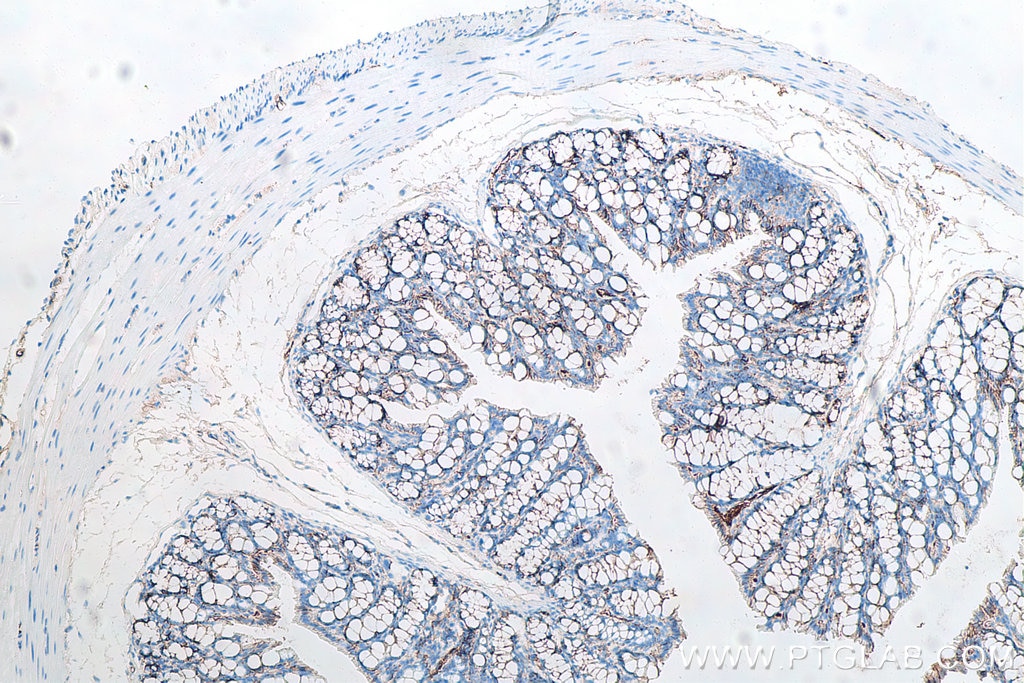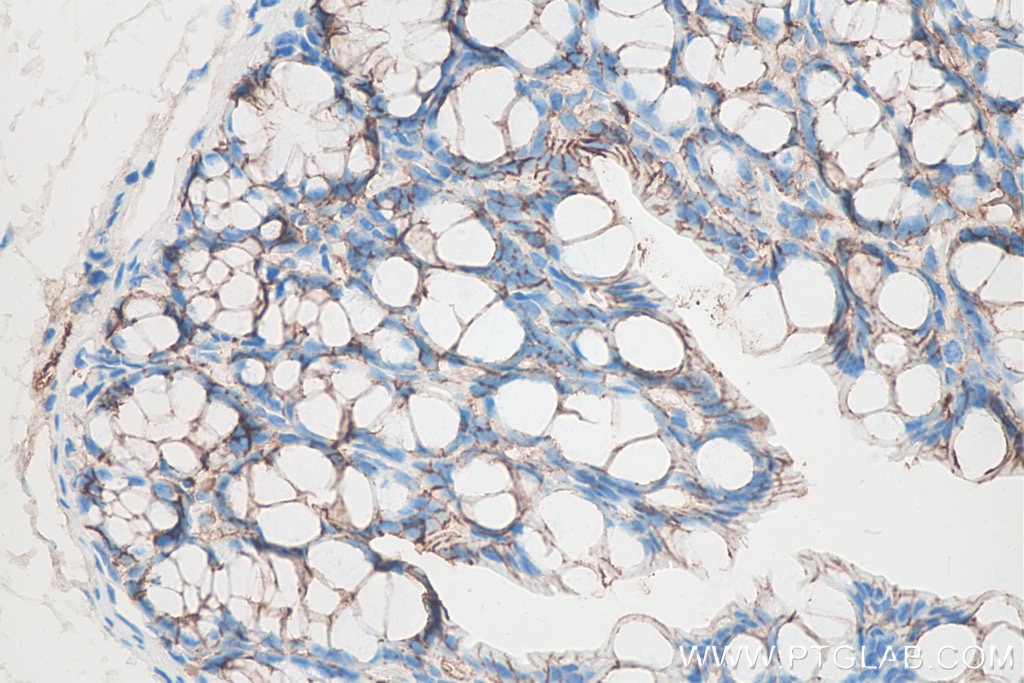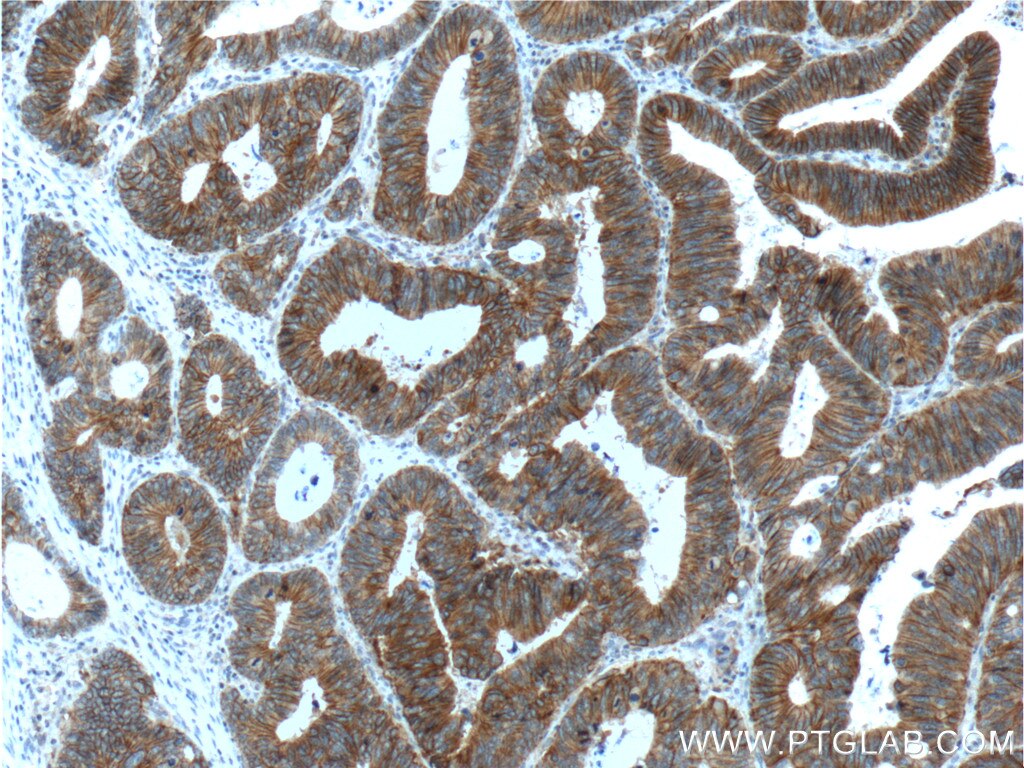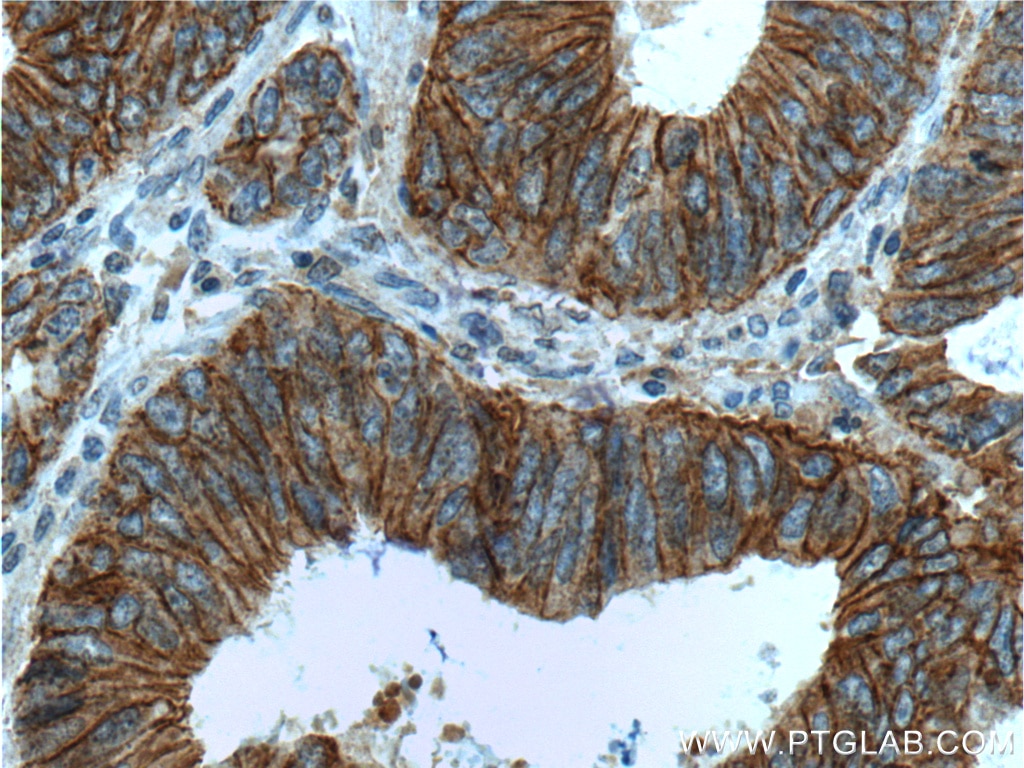- Featured Product
- KD/KO Validated
p120 Catenin Monoklonaler Antikörper
p120 Catenin Monoklonal Antikörper für WB, IHC, IF/ICC, IF-Fro, ELISA
Wirt / Isotyp
Maus / IgG2b
Getestete Reaktivität
human, Maus, Ratte
Anwendung
WB, IHC, IF/ICC, IF-Fro, IP, ELISA
Konjugation
Unkonjugiert
CloneNo.
2F7H8
Kat-Nr. : 66208-1-Ig
Synonyme
Geprüfte Anwendungen
| Erfolgreiche Detektion in WB | fetales humanes Hirngewebe, A431-Zellen, A549-Zellen, HEK-293-Zellen, HeLa-Zellen, Maushirngewebe, NIH/3T3-Zellen |
| Erfolgreiche Detektion in IHC | humanes Mammakarzinomgewebe, humanes Kolonkarzinomgewebe, Maus-Kolongewebe, Ratten-Kolongewebe Hinweis: Antigendemaskierung mit TE-Puffer pH 9,0 empfohlen. (*) Wahlweise kann die Antigendemaskierung auch mit Citratpuffer pH 6,0 erfolgen. |
| Erfolgreiche Detektion in IF-Fro | mouse breast cancer |
| Erfolgreiche Detektion in IF/ICC | A431-Zellen, HeLa-Zellen |
Empfohlene Verdünnung
| Anwendung | Verdünnung |
|---|---|
| Western Blot (WB) | WB : 1:500-1:2000 |
| Immunhistochemie (IHC) | IHC : 1:250-1:1000 |
| Immunfluoreszenz (IF)-FRO | IF-FRO : 1:200-1:800 |
| Immunfluoreszenz (IF)/ICC | IF/ICC : 1:200-1:400 |
| It is recommended that this reagent should be titrated in each testing system to obtain optimal results. | |
| Sample-dependent, check data in validation data gallery | |
Veröffentlichte Anwendungen
| WB | See 3 publications below |
| IF | See 3 publications below |
| IP | See 2 publications below |
Produktinformation
66208-1-Ig bindet in WB, IHC, IF/ICC, IF-Fro, IP, ELISA p120 Catenin und zeigt Reaktivität mit human, Maus, Ratten
| Getestete Reaktivität | human, Maus, Ratte |
| In Publikationen genannte Reaktivität | human, Maus, Ratte |
| Wirt / Isotyp | Maus / IgG2b |
| Klonalität | Monoklonal |
| Typ | Antikörper |
| Immunogen | p120 Catenin fusion protein Ag2824 |
| Vollständiger Name | catenin (cadherin-associated protein), delta 1 |
| Berechnetes Molekulargewicht | 948 aa, 105 kDa |
| Beobachtetes Molekulargewicht | 90-120 kDa |
| GenBank-Zugangsnummer | BC010501 |
| Gene symbol | p120 Catenin |
| Gene ID (NCBI) | 1500 |
| Konjugation | Unkonjugiert |
| Form | Liquid |
| Reinigungsmethode | Protein-A-Reinigung |
| Lagerungspuffer | PBS with 0.02% sodium azide and 50% glycerol |
| Lagerungsbedingungen | Bei -20°C lagern. Nach dem Versand ein Jahr lang stabil Aliquotieren ist bei -20oC Lagerung nicht notwendig. 20ul Größen enthalten 0,1% BSA. |
Hintergrundinformationen
Catenins were discovered as proteins that are linked to the cytoplasmic domain of transmembrane cadherins (PMID: 9653641). p120 catenin, also called p120 ctn or catenin delta-1, regulates cell-cell adhesion through its interaction with the cytoplasmic tail of classical and type II cadherins. p120 catenin is a tyrosine kinase substrate implicated in cell transformation by SRC, as well as in ligand-induced receptor signaling through the EGF receptor, the PDGF receptor, and the CSF1 receptor. Different expression patterns of p120 catenin in lobular and ductal carcinomas of breast have been reported: membrane stain for ductal carcinoma and cytoplasmic stain for lobular carcinoma (PMID: 24966968). Different isoforms of p120 catenin are variably expressed in different tissues as a result of alternative splicing and the use of multiple translation initiation codons (PMID: 19150613).
Protokolle
| PRODUKTSPEZIFISCHE PROTOKOLLE | |
|---|---|
| WB protocol for p120 Catenin antibody 66208-1-Ig | Protokoll herunterladen |
| IHC protocol for p120 Catenin antibody 66208-1-Ig | Protokoll herunterladenl |
| IF protocol for p120 Catenin antibody 66208-1-Ig | Protokoll herunterladen |
| STANDARD-PROTOKOLLE | |
|---|---|
| Klicken Sie hier, um unsere Standardprotokolle anzuzeigen |
Publikationen
| Species | Application | Title |
|---|---|---|
Mol Oncol Kaiso phosphorylation at threonine 606 leads to its accumulation in the cytoplasm, reducing its transcriptional repression of the tumour suppressor CDH1. | ||
Development Ontogenesis of the tear drainage system requires Prickle1-driven polarized basement membrane deposition. | ||
Proc Natl Acad Sci U S A SENCR stabilizes vascular endothelial cell adherens junctions through interaction with CKAP4. | ||
Biomed Pharmacother Inhibition of autophagy and RIP1/RIP3/MLKL-mediated necroptosis by edaravone attenuates blood spinal cord barrier disruption following spinal cord injury | ||
Clin Exp Pharmacol Physiol Colorectal cancer cells with stably expressed SIRT3 demonstrate proliferating retardation by Wnt/β-catenin cascade inactivation | ||
Cancer Discov Spatial Transcriptomics of Intraductal Papillary Mucinous Neoplasms of the Pancreas Identifies NKX6-2 as a Driver of Gastric Differentiation and Indolent Biological Potential |
